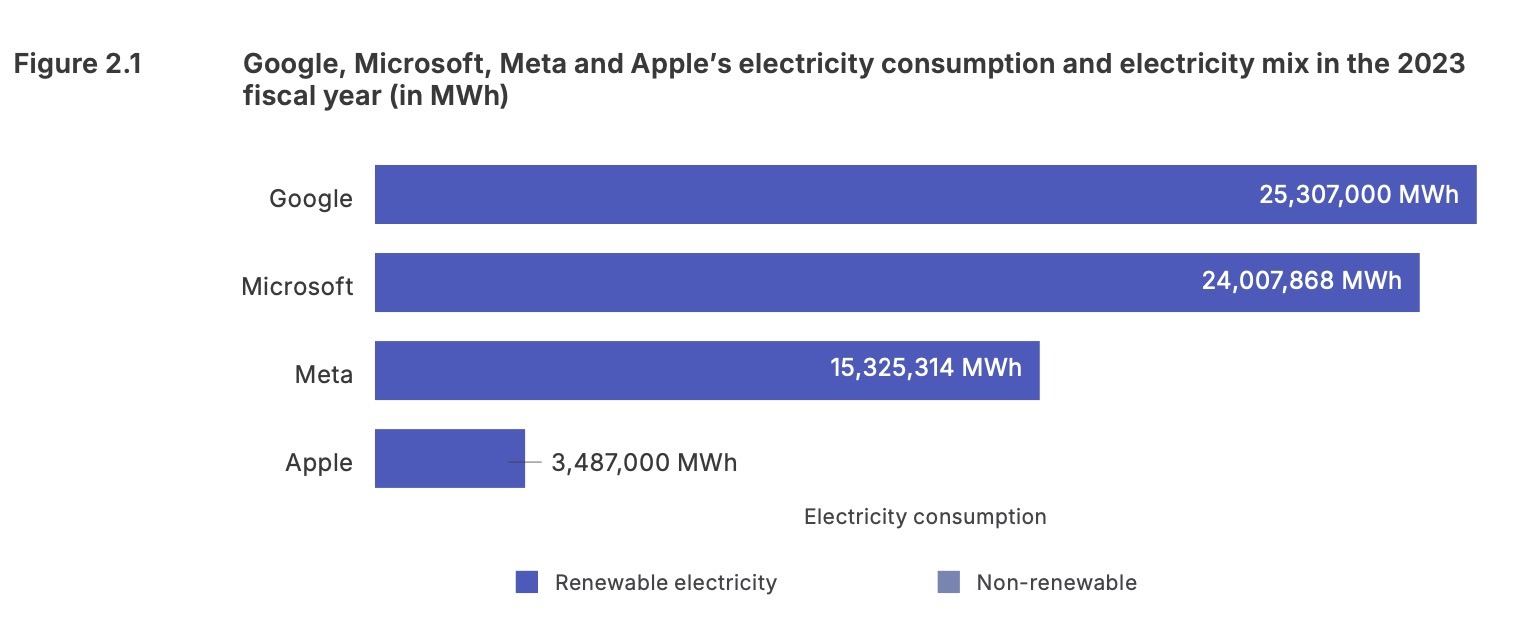Greenpeace warns AI is burning the planet

Greenpeace data
AI is blowing up the planet, and not in a good way. A recent Greenpeace report informs us that electricity consumption from the manufacture of artificial intelligence (AI) chips has soared by more than 350 percent worldwide between 2023 and 2024, with that need met mostly by use of fossil fuels.
That means that even as companies work to cut some energy consumption, they are consuming more elsewhere. It is to be hoped that some firms, Apple for example, have ensured the consequences of AI chip manufacturing is effectively mitigated.
It is, however, to Apple’s credit that even within this it has managed to massively reduce Scope 1 and Scope 2 emissions in contrast to the rest of the industry, according to Greenpeace. It is also actively involved in transitioning its supply chain to renewable energy sources, as indicated in its latest environmental report.
Key findings from the Greenpeace report include
- Global electricity consumption from AI chipmaking increased by more than 350 percent between 2023 and 2024
- By 2030, global electricity demand for AI chipmaking is estimated to increase by as much as 170-fold from 2023 levels – a level of consumption greater than the nation of Ireland.
- Much of the energy is being generated by gas, including LNG plant.
- Global emissions from electricity consumption related to AI chipmaking grew by an estimated 357 percent in 2024.
- In 2023, 58.5 percent of the electricity supply in South Korea was generated from fossil fuels, 68.6 percent in Japan, and 83.1 percent in Taiwan.
What has to happen
Greenpeace wants Nvidia, AMD and their peers to achieve 100 percent renewable energy across their entire supply chains, starting with the manufacturing of AI chips. “Hardware companies can overcome renewable energy bottlenecks by investing directly in wind and solar capacity, signing power purchase agreements, and leveraging their influence to advocate for a higher ratio of renewable energy in the grid,” Greenpeace said.
Make the change
Katrin Wu, Greenpeace East Asia Supply Chain Project Lead, said:
“While fabless hardware companies like Nvidia and AMD are reaping billions from the AI boom, they are neglecting the climate impact of their supply chains in East Asia. AI chipmaking is being leveraged to justify new fossil fuel capacity in Taiwan and South Korea – demand that could, and should, be met by renewable energy sources. Across East Asia, there are many opportunities for companies to invest directly in wind and solar energy, yet chipmakers have failed to do so on a meaningful scale. It is crucial for Nvidia, AMD, and their peers to fully recognize the environmental impact of their supply chains and work with manufacturers to increase renewable energy use.
Alex de Vries, one of the report authors and the founder of Digiconomist, said: The rapidly rising energy costs of AI data centers have captured global headlines, yet the environmental implications of other parts of the hardware lifecycle are often overlooked. The manufacturing process of AI hardware is energy intensive and carries a significant environmental footprint, especially considering the concentration of this manufacturing in East Asia, where power grids still rely heavily on fossil fuels, and chipmakers have taken few steps to procure renewable energy. As AI hardware demand escalates, it’s crucial to consider the rising emissions associated with AI hardware manufacturing.”
You can follow me on social media! Join me on BlueSky, LinkedIn, and Mastodon.




